2019 Audi Q3 Review

Since the first Audi Q3 arrived in North America just a few short years ago, the subcompact luxury crossover segment has exploded.
At the time, the Q3 and BMW X1 had the niche pretty much all to themselves, but Mercedes launched the GLA at virtually the same time, then Infiniti came in with the QX30, Volvo delivered the XC40, Jaguar brought us the E-Pace, and now the Cadillac XT4 and Lexus UX are coming to market.
The 2019 Audi Q3 redesign placed an emphasis on practicality thanks to a substantial growth spurt and updated styling with greater customization and options for customers to personalize their crossover. They didn’t stop there, however, taking advantage of Audi’s innovations introduced in flagship models to make it a technological tour de force in the cabin and on the road, while maintaining the brand’s identity.
ALSO SEE: Where is Audi Made?
Compact and Customizable
The first-generation Q3 was, perhaps, a bit bland, so Audi wanted to give it a bit more personality, and it comes in the form of a more angular theme, with sharper hexagonal grille and more angular shapes throughout the exterior and interior. However, the biggest impact is an injection of color, with a couple new paint options that are sure to grab attention, with matching interior accents in Alcantara for the orange Q3 we drove. While vibrant shades of blue and orange would look out of place on something like an A8 or Q7, it gives a cheerful and sporty attitude to Audi’s small crossover, exactly the effect designers wanted to achieve.
ALSO SEE: 2019 Volvo XC40 vs 2018 BMW X1
The Q3 remains Audi’s smallest crossover in North America, but it has grown over the previous model, almost four inches in length and three inches in wheelbase, the difference making a huge impact in usable space. At 176 inches long (4,485 millimeters) with a 106-inch (2,680-mm) wheelbase, cargo space has grown to 18.7 cubic feet (530 liters) in the trunk, with 40/20/40 split-split-folding rear seats for maximum flexibility and up to 53.9 cu-ft (1,525 L) with all the seats folded. However, if you need just a little bit of extra space, the rear seats slide forward up to 5.9 inches (150 mm), and the power tailgate can be opened with a sweep of your foot under the rear bumper.
Passenger space has also grown, particularly in the back. Even behind the driver seat set up for myself, I had sufficient legroom and headroom for my 5’10” frame, and the rear outboard seats are nicely contoured for support and recline for added comfort. The middle position is best used as an armrest, the child seat anchors are easily accessible, and for older kids, there’s a perfect little pocket for device storage on each side in addition to mesh pockets on the front seatbacks. The driver’s seat is firm but nicely contoured for long-distance comfort, and it reflects the geometric circuit board theme of the design whether trimmed in cloth or leather and Alcantara.
Up-to-Date Technology
After the growth spurt, the biggest generational change is in the updated tech that’s now available in the Q3. Facing the driver is a digital gauge cluster, at minimum 10.3 inches, or the full reconfigurable 12.3-inch Virtual Cockpit when the upgrade option is selected. Navigation, audio, communication and vehicle information can be displayed in two different layouts and controlled from the steering wheel. This was especially nice because the steering wheel is covered in smooth leather (or an even nicer perforated leather with the S-Line package), and contoured perfectly for hands at three and nine, so you won’t want to take your hands off the wheel.
ALSO SEE: 2019 Lexus UX Review | UX 200 and UX 250h
The high-quality materials continue throughout the cabin, with excellent switchgear, Alcantara trim that’s a treat for the fingertips, and funky little sculptural door handles. However, one thing that seemed odd was the volume knob, which is tucked under the colorful, backlit HVAC controls. Maybe it’s intended to be convenient for the passenger as the driver has the same controls on the steering wheel, but the screen itself is canted toward the driver, emphasizing who is in charge of picking radio stations and tunes.
The central MMI touchscreen is 8.8 inches standard, and 10.1 with the upgrade. The menus are easy to pick up, and the touchscreen is fast and clear with haptic feedback, so it’s a painless system to use, with natural speech voice command available to skip past the menu structure and trigger specific functions. Navigation can be displayed with Google Earth and the route guidance will take traffic into consideration. Destination entry can be by voice command, keyboard, or scribbled into the handwriting recognition panel that pops up on the lower left side of the screen.
If you prefer your smartphone’s navigation and voice command, Apple CarPlay and Android Auto are standard, and Apple CarPlay can now run Google Maps (Hallelujah!), so you have plenty of options for getting directions where you want to go. Supporting your phone addiction is an LTE wifi hotspot and wireless charging in addition to several USB ports.
Good Foundation
When the last Q3 update rolled around for Europeans, introducing a wide range of new engines, Audi in North America skipped the new powertrains and stuck with the 2.0T in 200-horsepower tune. This time around, we’ll see the latest generation of the 2.0 TFSI in two forms, the 184 horsepower and 228 hp.
Although we did not have a chance to drive the base powertrain, the 184 hp is paired with 236 lb-ft of torque, which should be sufficient for the little crossover. The high-po version of the 2.0T in the Q3 has 258 lb-ft of torque to go along with its 228 hp. It’s not earth-shattering at 6.3 seconds to reach 62 mph (100 km/h), and I was looking for more as an engine upgrade, but it can get to highway speeds without fuss and cruises at high speeds effortlessly, with plenty of torque down low and through the heart of the power band where you’ll spend most of your time.
The only transmission on offer will be the eight-speed traditional automatic, but Quattro all-wheel drive will no be standard. Unfortunately, we only had Euro-spec seven-speed dual-clutch S-tronic transmissions on hand to test, which were smooth enough in ordinary driving, but suffered the familiar hesitation at low speeds when just trying to crawl. Quattro all-wheel drive will give it surefooted traction that will make it more confident in winter and other poor conditions.
Although the Q3 was only available in North America since 2015, it’s been in production on the current platform for over seven years, that platform dating back to the Mk5 Golf architecture, so its move to Volkswagen Group’s adaptable MQB architecture is quite a leap forward. The new Q3 is outfitted with front McPherson struts and rear four-link design, but unfortunately, Americans won’t have the option to select adaptive dampers that can adjust to road conditions and driving inputs, or locked in to driver tastes in Comfort or Dynamic modes. Our version of Drive Select will be limited to transmission, steering, and throttle. The powertrain can also be set to a more efficiently minded Eco mode, and you can use individual mode to mix and match these settings.
Driving Impressions
Sharing DNA with the Volkswagen GTI, Audi S3, and Audi TTRS among others, there is a foundation for driving excellence that is more than enough for a small crossover that really needs only token sportiness to satisfy most shoppers in this segment. That being said, the Q3 nails it, with sportiness beyond what most owners will need, without giving up a composed ride that will be comfortable on a day-to-day basis, although we had the benefit of the adaptive dampers in our test vehicles.
It rides in typical Audi fashion, quietly absorbing bumps with a quick thump and immediately settling back down, taking the edge of any sharp impacts, even when shod with the big 20-inch wheels. Although the suspension is adaptive, it’s not a huge difference between Comfort and Dynamic, so it isn’t really much of a concern since both achieve a happy balance, which bodes well for the fixed regular setup we will get in North America. The difference between the steering settings is a little more distinct, but even in Dynamic, it is still quite light.
Then again, it’s probably just right for this segment, making it effortless to twirl the wheel and park even in tight spots, which is incredibly easy with the optional 360º cameras displaying a clear composite image on the big central screen, with parking sensors for good measure. This came in very handy when our route took us through the historic downtown of Bressanone, Italy, where we had to reverse course when we discovered our route blocked by a mountain biking festival and street fair.
Although the steering is fingertip light, it doesn’t stray on the highway, staying centered and planted at high speeds. The adaptive cruise will maintain the set distance all the way down to stop-and-go traffic and lane-keep assist will use the power steering to nudge the Q3 back into its lane smoothly. Other safety nets include forward collision alert, blind spot warning, rear cross-traffic alert, which will warn of vehicles approaching from the sides as you’re backing up, and if you start opening a door when a bike or car is about to pass, a flashing light in the door and beeps alert you to its presence.
ALSO SEE: 2018 BMW X2 Review
As a crossover, Audi gave it some capability in all areas, without being too extreme in any. If driven sportily, it will hold its line admirably and the steering is consistent and accurate even if it is completely numb, and body roll builds gradually and acts as a good early warning system if you start to push its limits. Although not aggressively tuned, and no sport suspension will be available in this market, it can still be fun if you get a chance to string together a few quick corners in succession, the chassis staying balanced, the 20-inch tires offering plenty of grip, and dual-clutch responding promptly to paddle-shift inputs in the model we tested. Although it may have subtle differences specific to the Q3, the eight-speed automatic has proven sporty enough with better low-speed manners in other Audis we’ve tested recently.
See More: 2018 Audi S5 Sportback Review
At the other end of the spectrum, the Q3 Drive Select also offers an Offroad mode to shift the transmission, throttle, and all-wheel-drive responses to suit rough roads and tracks. It doesn’t have much in the way of ground clearance, though, so it can’t tackle anything too drastic, but it would certainly be useful if you need to get through any mild rough or deep muddy sections off paved roads.
The Verdict: 2019 Audi Q3 Review
The 2019 Audi Q3 isn’t groundbreaking or revolutionary, but it didn’t need to be. All it really needs to do is serve up the same balance of qualities as Audi’s hugely successful Q5 and Q7 in a smaller package. In that regard, the Q3 nails it, with a mildly sporty drive, a full arsenal of technology to make the drive safer and more convenient, and creature comforts befitting a small, entry-level luxury crossover. Its fresh new look is also a good improvement, and its unique touches help it stand out, especially when paired with one of the bright, cheerful colors.
While Audi hasn’t yet announced any prices, don’t let the expected price jump fool you, as 2018 models with all-wheel drive only start at $35,975 ($35,000 MSRP plus $975 destination) and the new model includes Quattro AWD as standard. In Canada, AWD models currently start at $40,495 ($38,400 + $2,095). However, with two tiers of power, standard all-wheel drive, and a slew of new customization and features now on offer, it will likely reach new heights in pricing when it arrives in North America in the second quarter of 2019. While others in the segment are likely to offer better value, the Audi Q3 has the appeal of a complete package that does everything well. Superb build quality and reassuring solidity make it feel like its bigger siblings, so the Q3 delivers a convincing luxury experience all around in a small, convenient, and practical package.
Discuss this article on our Audi Q3 Forum
LOVE IT
- Balanced ride and handling
- Awesome tech
- Design touches and personalization
- Superb build quality and materials
- Useful size
LEAVE IT
- Information overload
- Transmission at low speeds
- Engine upgrade needs more juice

Jonathan eats, sleeps, and breathes cars. A family man through and through, Jonathan brings over 10 years of experience evaluating cars with a focus on the details that parents will be grateful for, and cars that drivers will appreciate.
More by Jonathan Yarkony



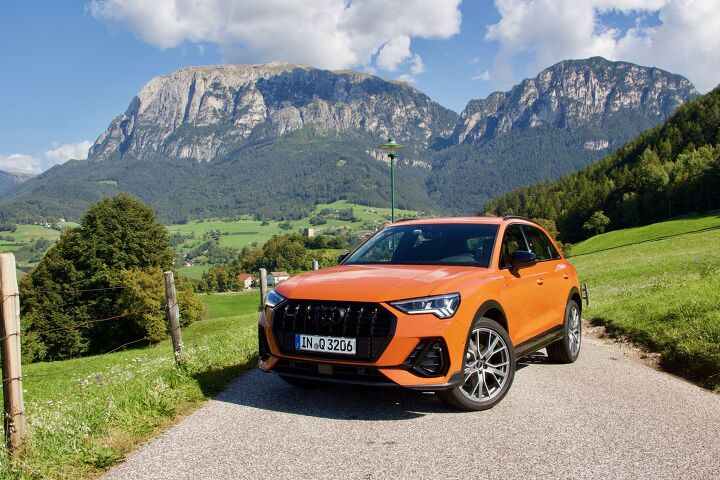



























































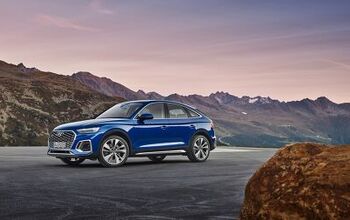
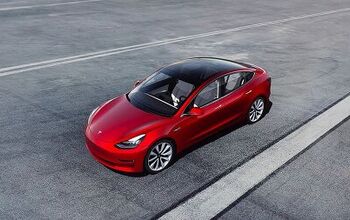


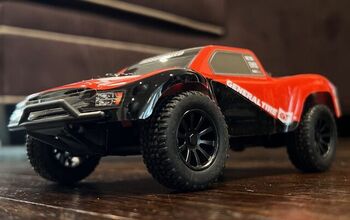

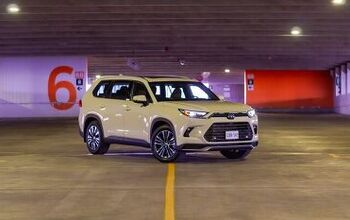

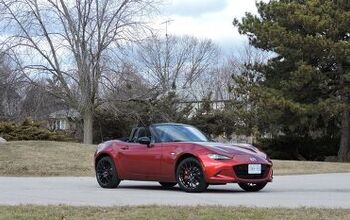
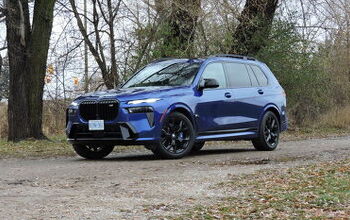
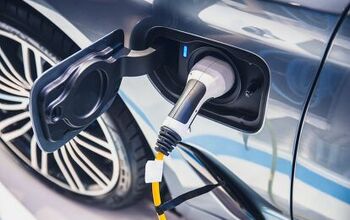

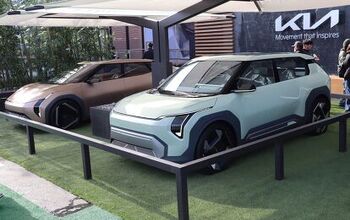
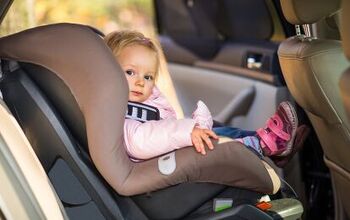
Comments
Join the conversation
I had been interested to see if it was going to get the Tiguan 8 speed tranny as VW has said North Americans like their regular autos over the DSG low speed shuttering. Audi nailed all the changes...My next vehicle!
Cool! It's got the same instrument panel and dashboard as the 2019 VW Jetta for $25,000. :-)